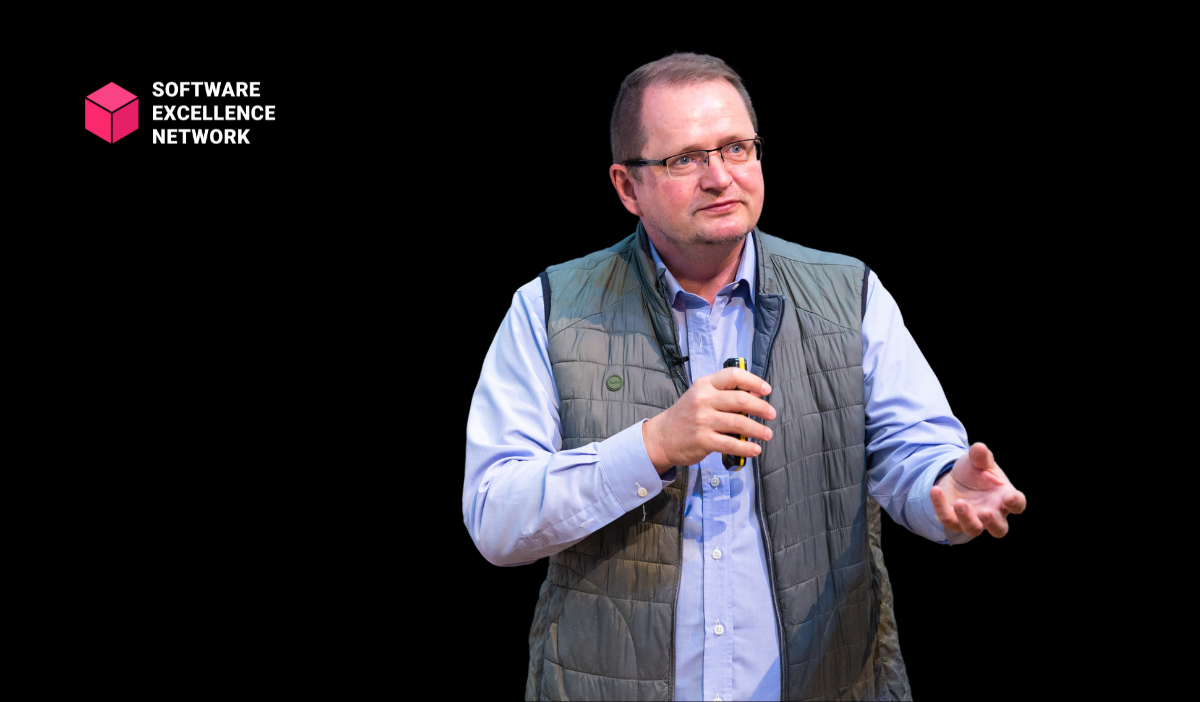
In his masterclass, Prof. Dr. Jürgen Döllner of the Hasso Plattner Institute shed light on the profound challenges and opportunities of integrating sustainability into software production. His nuanced approach moved beyond theoretical assertions, focusing instead on practical insights and critical questions about why software struggles with sustainability compared to traditional industries.

At its core, sustainability in software is a resource optimization challenge. Finite resources—whether computational (e.g., memory, bandwidth, or hardware capacity) or environmental—must be managed efficiently to achieve long-term goals. Prof. Döllner emphasized the psychological distance software developers often feel from these limitations, especially in the age of seemingly unlimited cloud storage and computational power. While these resources appear boundless, their finite nature becomes apparent when costs surge or environmental impacts accumulate.
This distance is compounded by the continuous technological advancements that obscure resource constraints. For decades, improvements in bandwidth, CPU, and GPU performance have outpaced demand, fostering a culture where developers prioritize convenience and abstraction over efficiency.
Abstraction in software development simplifies complexity and accelerates innovation. Yet, as Prof. Döllner argued, it also hides the underlying resource costs. He illustrated this with a seemingly simple algorithm: the computation of the greatest common divisor (GCD). Comparing implementations in Python and C++, he showed how abstracted, high-level code can generate significantly higher runtime and memory overhead than optimized, low-level equivalents.
This principle scales dramatically in modern software systems. Frameworks, design patterns, and code generators, while invaluable for productivity, often introduce inefficiencies that remain unnoticed until they manifest as performance bottlenecks or environmental costs.
The "rebound effect"—where increased efficiency leads to greater overall consumption—was another critical point. As systems become faster and more efficient, they enable more complex functionalities, which in turn demand greater resources. Prof. Döllner recounted a striking example: a basic calculator app on a mobile device malfunctioned due to background processes overwhelming the system. This trivial instance underscores how resource consumption spirals out of control when unnecessary processes proliferate.
One of the most compelling aspects of Prof. Döllner's talk was his advocacy for circularity in software development—a concept borrowed from the physical world of recycling. He posed thought-provoking questions: How can older systems be updated and reused rather than discarded? Can software systems be designed for modularity, enabling seamless upgrades without wholesale replacement?
Prof. Döllner introduced green coding as a movement to prioritize resource-efficient programming practices. By leveraging static, dynamic, and evolutionary analyses, developers can identify "hotspots" in their code—areas where inefficiencies cluster—and focus optimization efforts where they matter most.
This proactive approach aligns with the broader push for sustainability in software. It acknowledges that achieving meaningful change requires a shift in mindset, recognizing resource constraints not as a hindrance but as a design opportunity.
The transition to sustainable software production is not a sprint but a marathon. It involves embedding efficiency into every stage of the software lifecycle, from design to deployment and beyond. Prof. Döllner highlighted several strategies:
By combining these practices with advanced analytics and machine learning, the industry can make informed decisions about where to invest optimization efforts.
Prof. Döllner concluded with a vision of sustainability as a guiding principle for software innovation. He challenged developers, architects, and policymakers to rethink their assumptions, embrace resource constraints, and prioritize efficiency. The rewards are not merely environmental but also economic, as sustainable software can reduce costs and extend system lifecycles.
In an era where software touches every aspect of our lives, this masterclass serves as a wake-up call. Sustainability is no longer an optional add-on; it is a necessity. As Prof. Döllner put it, the time has come for the software industry to confront its hidden complexities and unlock the potential of sustainable innovation.
The Software Excellence Network is a premier community uniting IT executives and academic leaders in computer science to advance the art and science of software development. Through collaborative insights, thought leadership, and exclusive events, the network drives innovation and fosters excellence in addressing the complex challenges of modern software production. Join us in our mission!
This article provides a concise summary of the ideas and insights shared by Prof. Dr. Döllner during his masterclass on software sustainability. To gain the full depth of understanding and see real-world examples, we invite you to watch the complete presentation below. If you have questions or concerns, please reach out.
These Stories on Events/Webinars
August-Bebel-Str. 26-53
14482 Potsdam, Germany
hello@seerene.com
+49 (0) 331 706 234 0
Generative AI Seerene GmbH
August-Bebel-Str. 26-53
14482 Potsdam, Germany
hello@seerene.com
+49 331 7062340